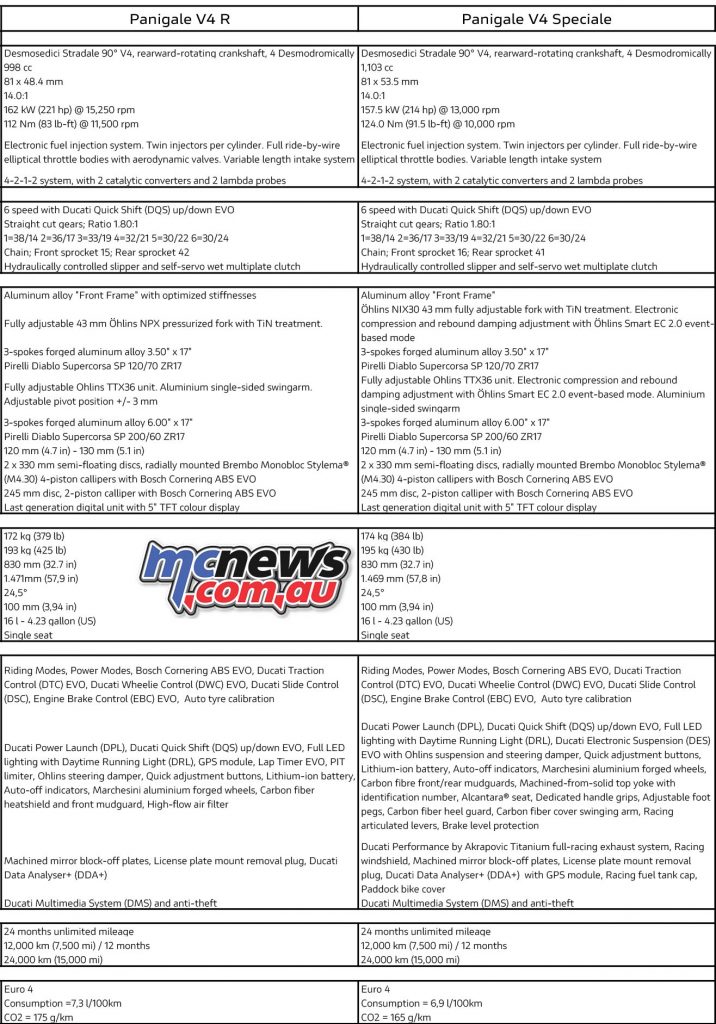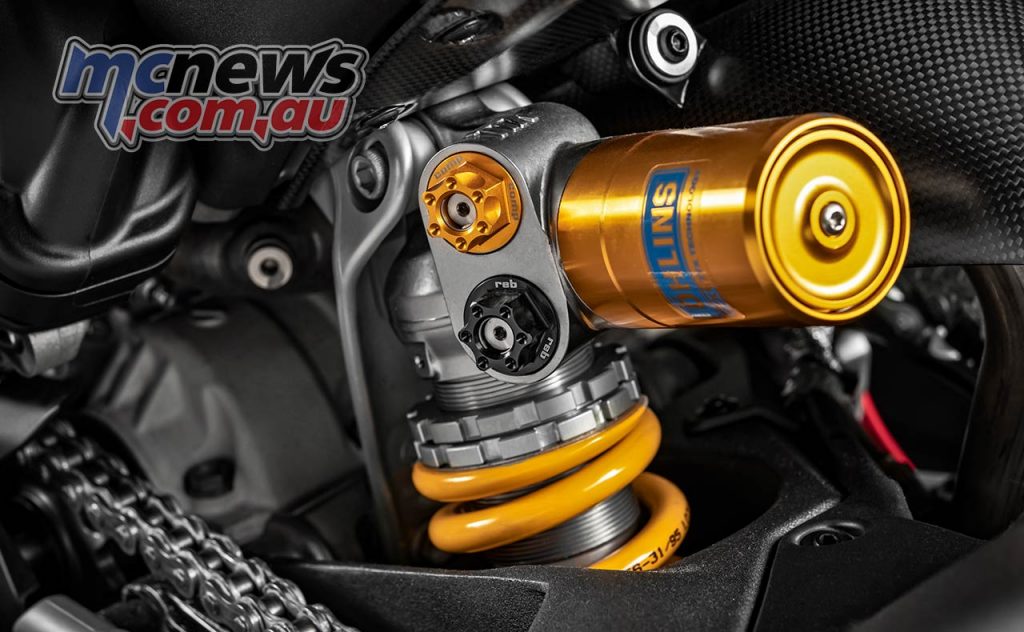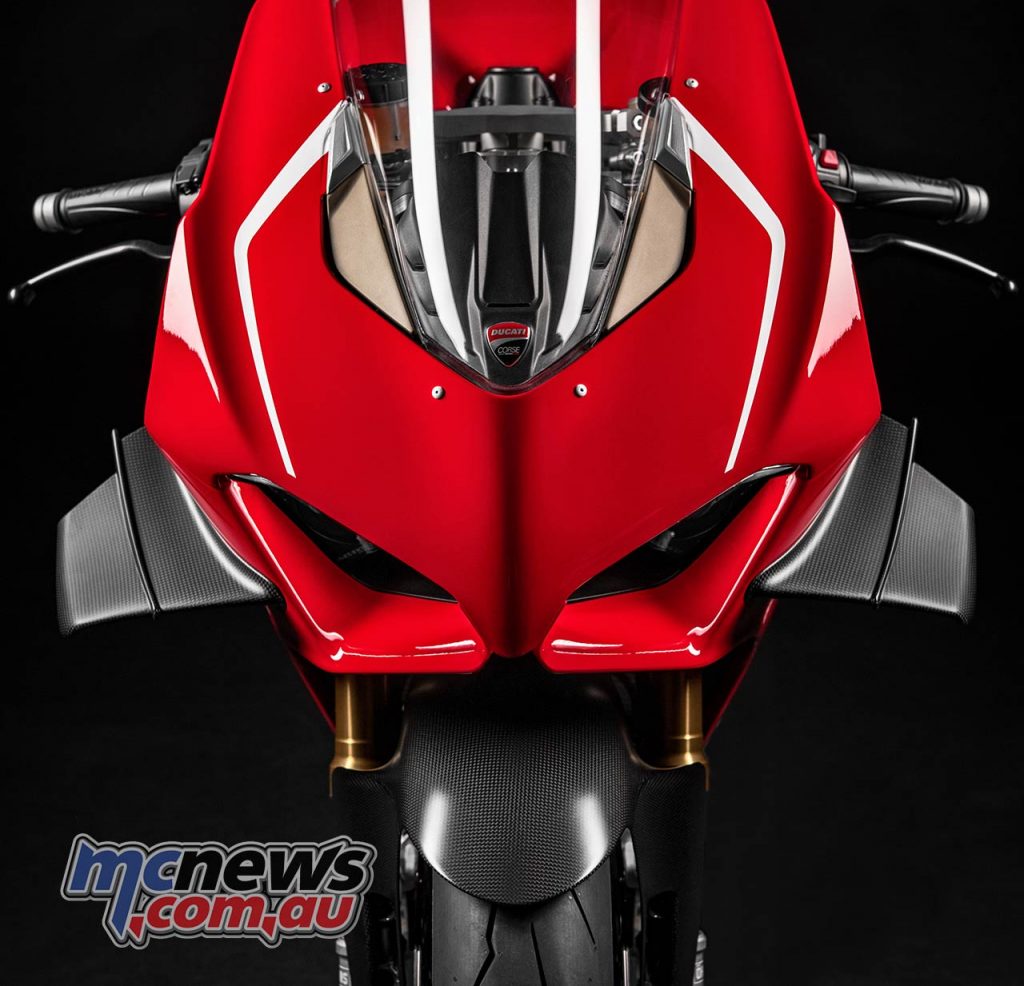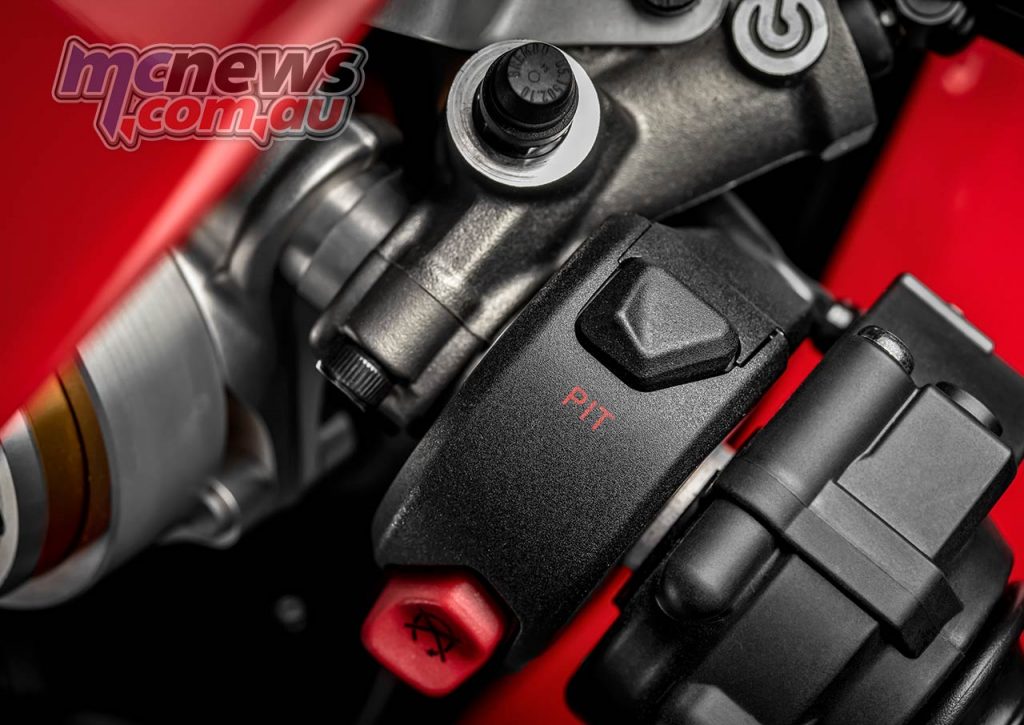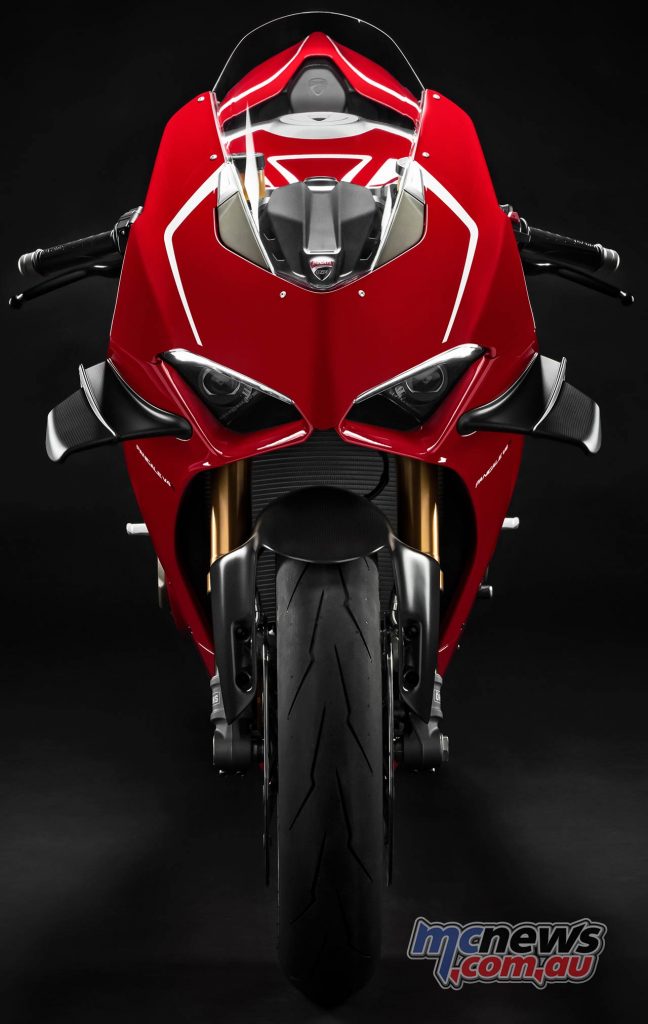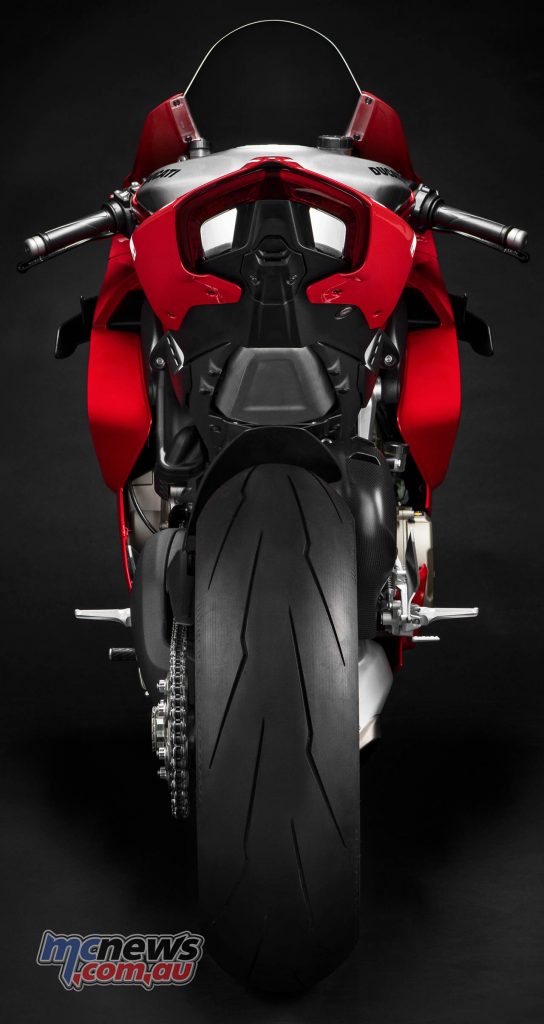2019 Ducati Panigale V4 R
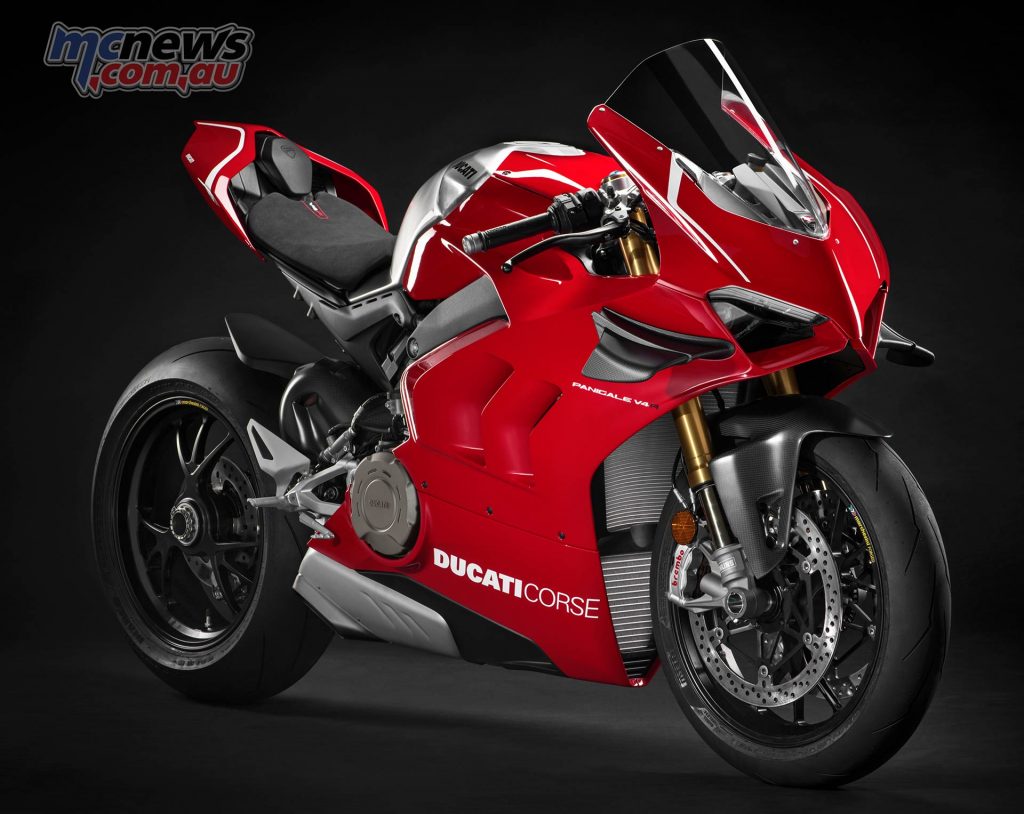
998c Desmosedici Stradale R
234hp at 15,500 rpm – 193kg
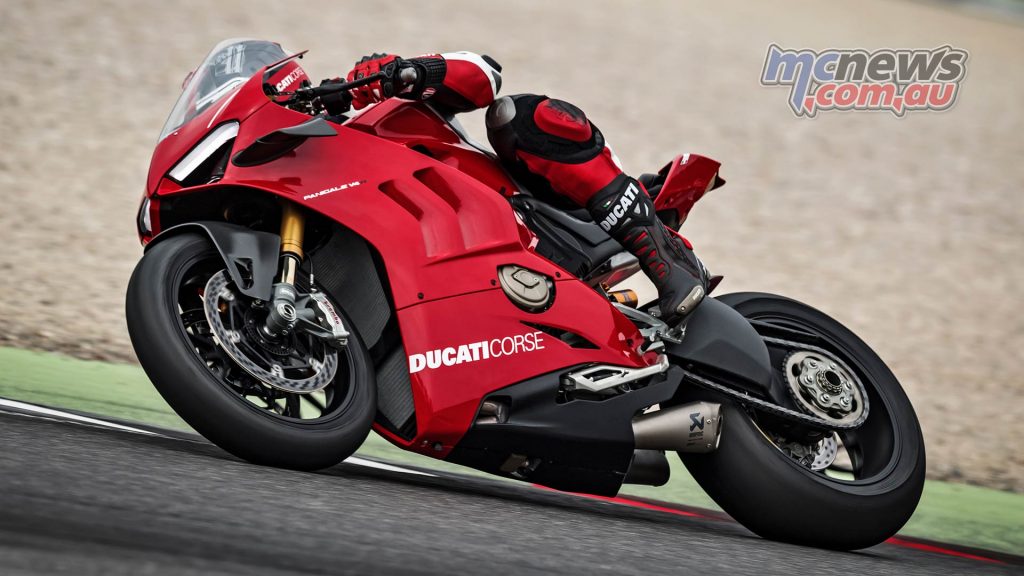
Ducati have unveiled the headline act of the new 2019 model line-up at EICMA, with the Panigale V4 R breaking cover, and we’ve now seen some additional details on specifications, including a 16,500rpm rev limiter in sixth, STM EVO-SBK dry clutch, chassis revisions over the V4 S and more…
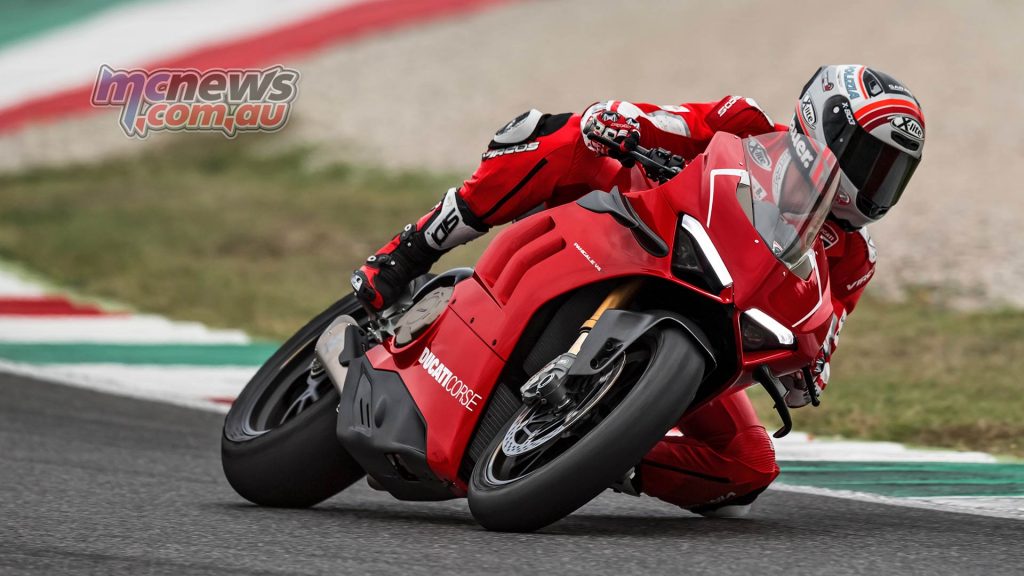
This is the machine designed to take on World Superbike and that will also likely hit the racetracks of Australia in the hands of Ducati legend Troy Bayliss.
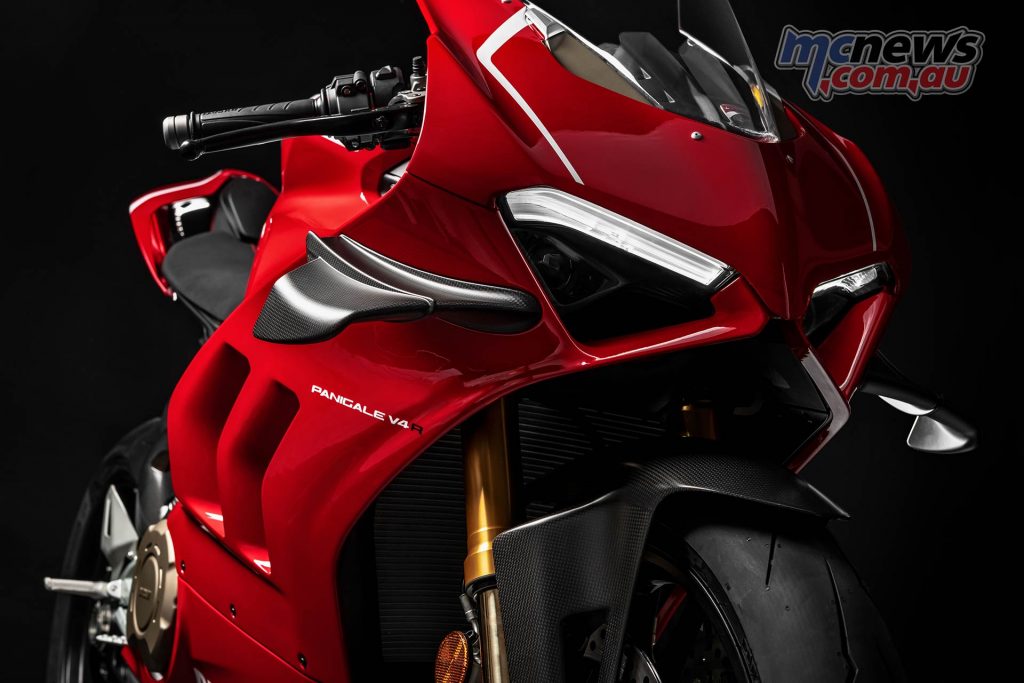
Josh Brookes will also be lighting up the tracks of British Superbike in 2019 onboard this new Desmo demon.
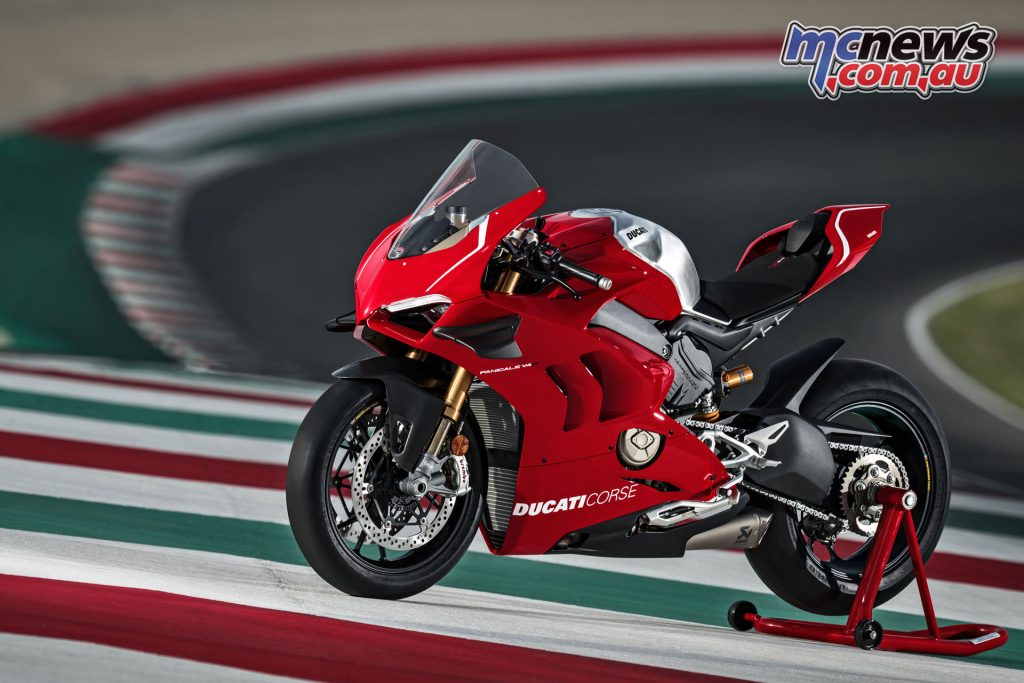
For this road registrable homogolation special the Desmosedici Stradale 1103cc engine of the regular Panigale V4 is downsized to a 998cc version. This is to comply with race regulations and is tuned to a higher state of competition readiness.
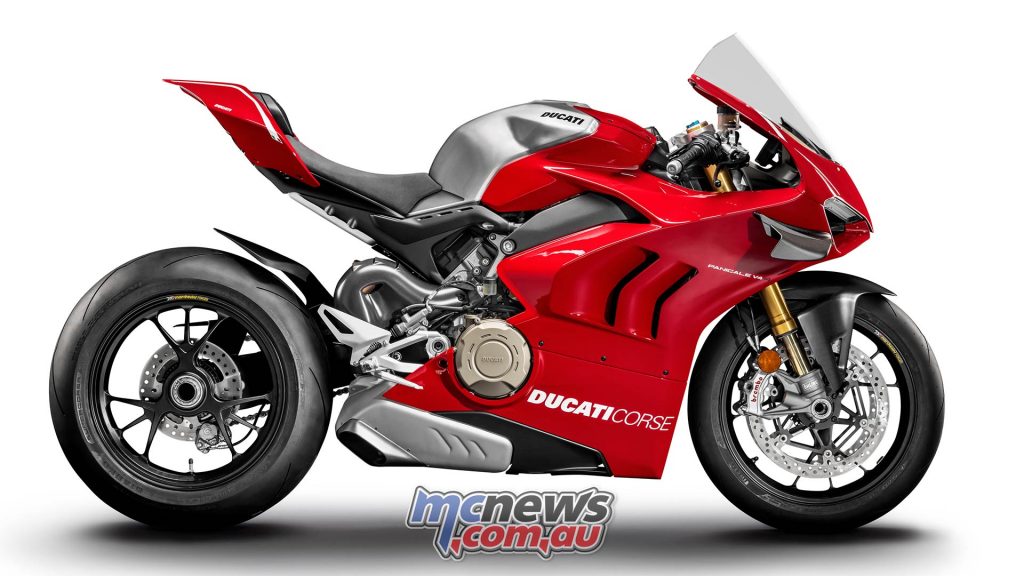
A host of lighter internal engine components reduce weight by 2kg to bring the Panigale V4 R down to 193kg wet.
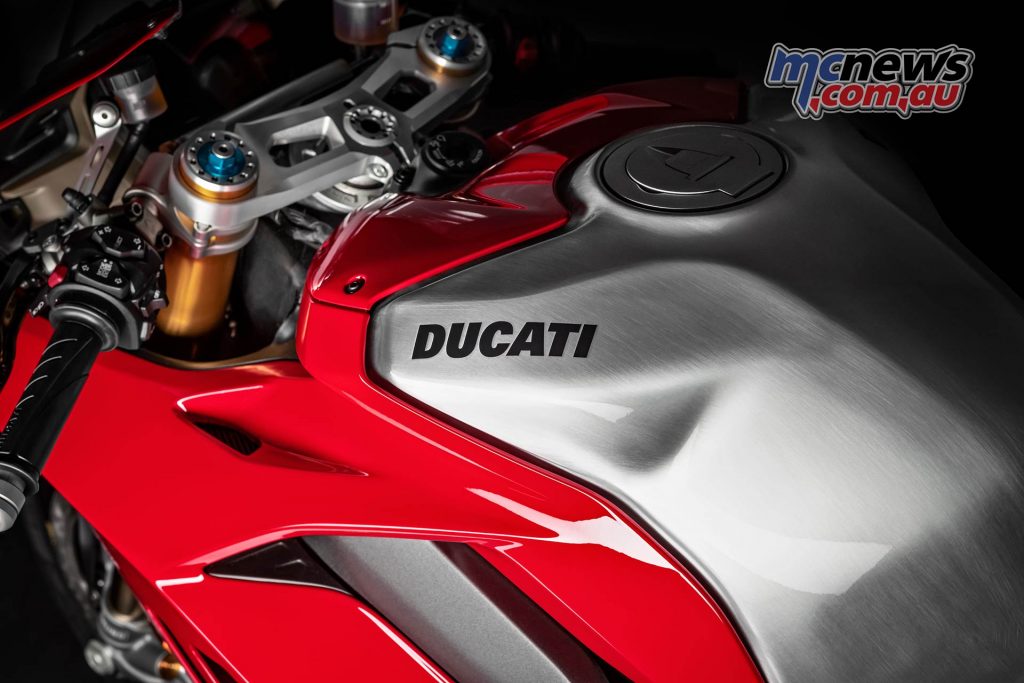
Greater air intake efficiency also allows for more rapid engine rev-up, with a higher rpm ceiling along with peak power being moved 2250rpm higher than on the 1103cc V4.
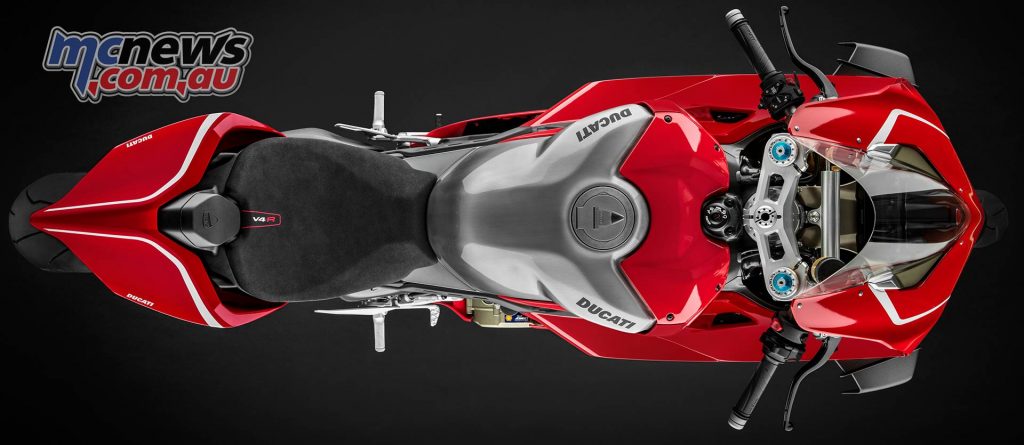
A staggering 221hp is on offer at 15,250rpm, while a full-racing Ducati Performance exhaust by Akrapovič boosts power to 234hp at 15,500rpm. Running 14.0:1 compression the Panigale V4 R revs to 16,000rpm, while sixth gear will rev to 16,500rpm.
Like the Desmosedici Stradale, the R version is a 90° V4 with cylinders banked 42° back from the horizontal, a Twin Pulse firing order and a counter-rotating crankshaft*.
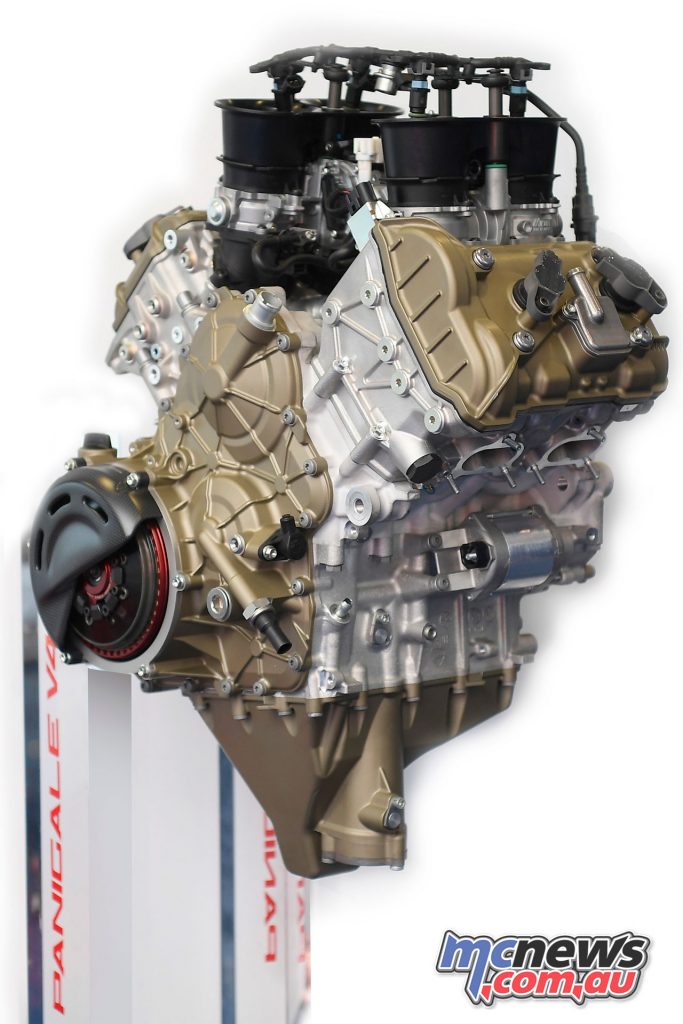
Designed to be a fully stressed member of the vehicle, the engine retains a bore of 81mm while stroke has been changed to 48.4mm thanks to the new forged steel crankshaft which moves four titanium con rods with a centre-to-centre of 104.3mm: each one is 100g lighter than the steel ones used on the Panigale V4.
Pistons are made of moulded aluminium, have a single compression ring plus an oil ring and take advantage of “box in box” technology: this contains both skirt height and below-chamber thickness, helping to reduce attrition and inertial loads while maintaining the necessary strength and stiffness.
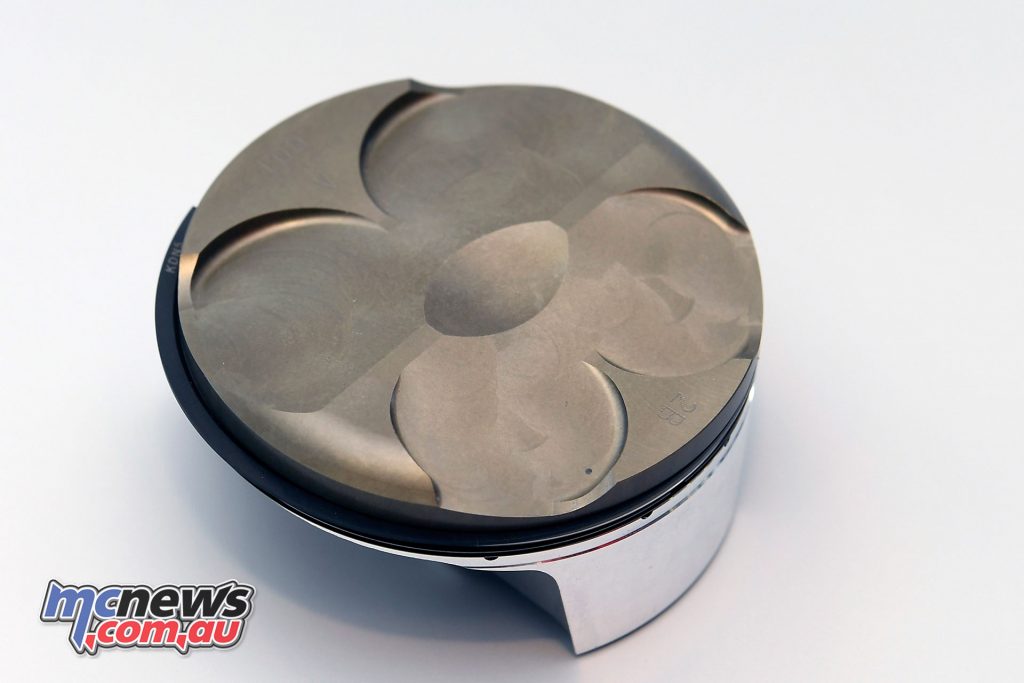
Featuring dedicated profiles, the four Desmosedici Stradale R camshafts provide increased lift with respect to the Desmosedici Stradale and move the sixteen valves (34mm titanium intake valves, 27.5mm steel exhaust valves).
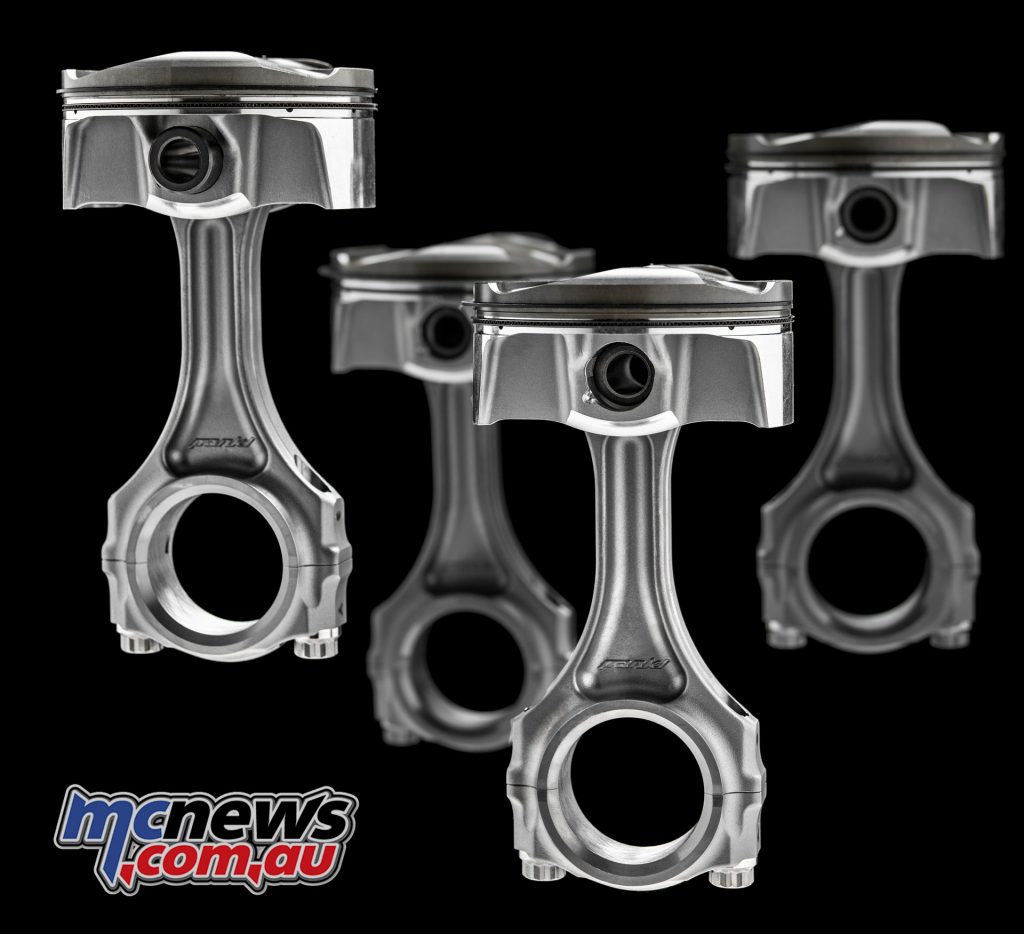
The valves feature titanium half-cones, a solution usually adopted only on racing bikes. Dedicated fluid dynamic design of the R engine cylinder heads has led to the development of new, larger intake ducts.
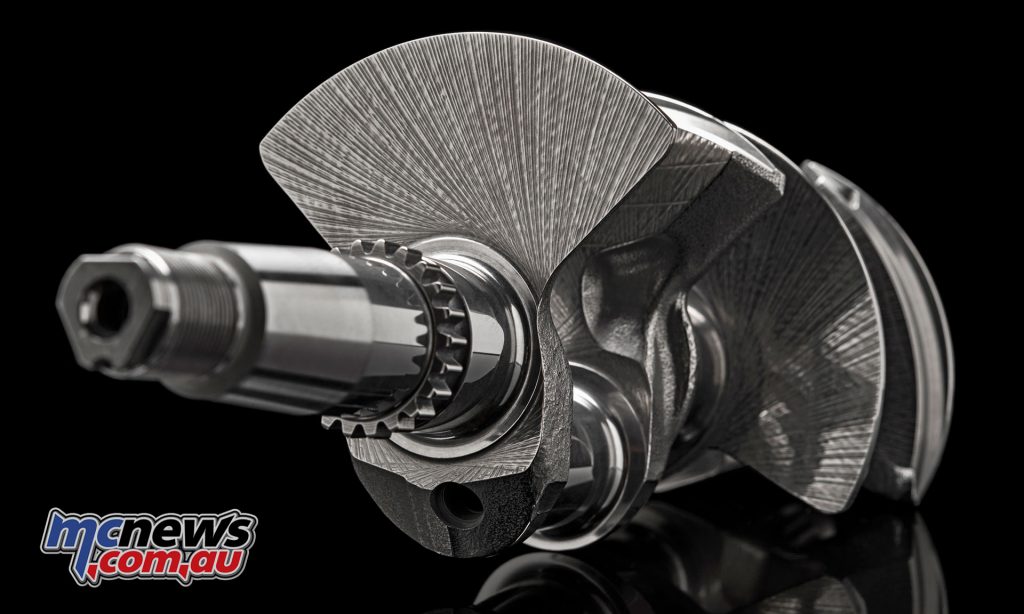
The new crankshaft – 1100 grams lighter than the one on the Panigale V4 – is mounted on brass bushings and retains the 70° crank pin offset together with the 90-degree V engine layout. This solution generates what Ducati calls a Twin Pulse firing order, because it’s as if the engine were reproducing the firing sequence of a twin-cylinder.
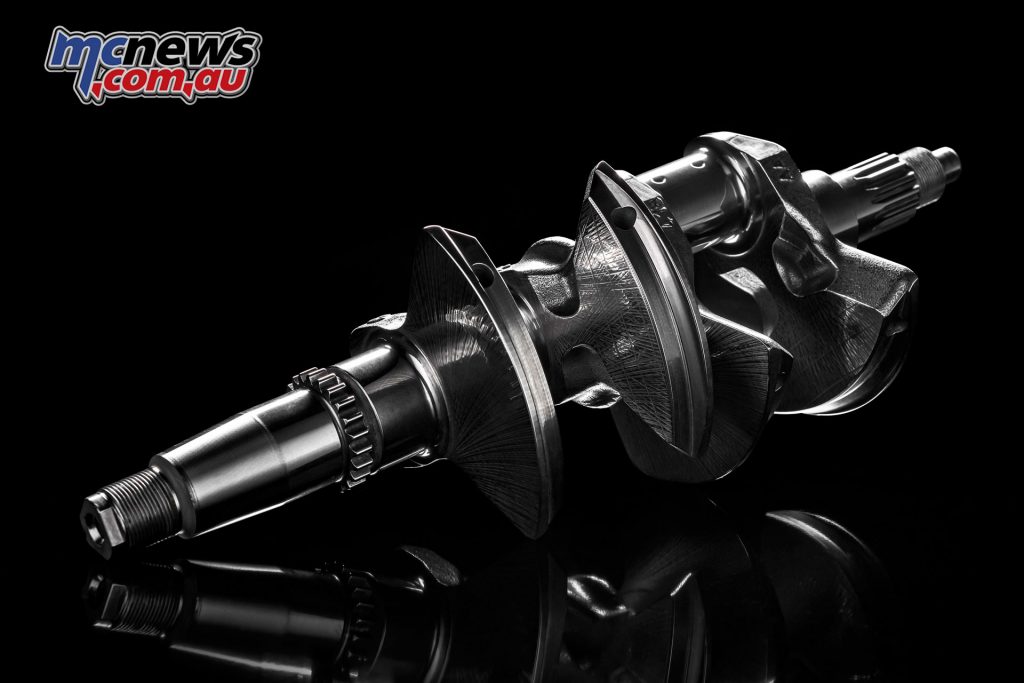
The two left-hand cylinders fire closely together, as do the two right-hand ones. On the timing chart, the ignition points are, then, at 0°, 90°, 290° and 380°. This particular firing order makes the V4 sound just like the MotoGP Desmosedici.
The Desmosedici Stradale R engine gulps in air through oval throttle bodies and aerodynamic throttle openings (56mm equivalent, an increase of 4mm) connected to variable-height air intake horns of dedicated length. This solution optimises cylinder intake across the rev range, giving major advantages in terms of power delivery and handling. The R engine breathes through a high-permeability Sprintfilter P08 air filter.
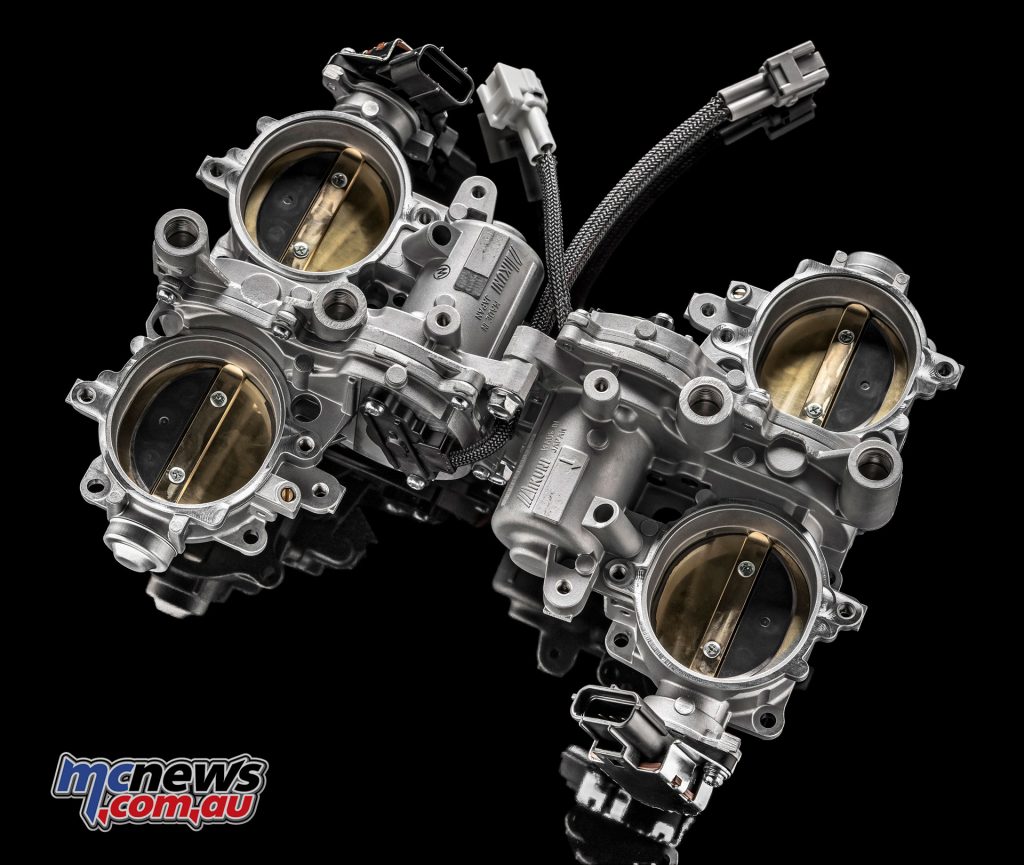
As in MotoGP, the Panigale V4 R features a dry clutch – a STM EVO-SBK clutch, made of machined-from-solid aluminium with a 48-tooth clutch basket and plate set; there are nine take-up plates and nine drive plates with a diameter of 138mm.
Benefits include the absence of the resistance opposed by the engine oil and reduced oil contamination as dust from disc wear is not carried into the lubrication circuit.

Since the Panigale V4 R has been designed for near-exclusive use on race tracks, it does not mount the semi-active Öhlins suspension seen on the V4 S but, rather, the Swedish firm’s professional mechanical units.
Up front, the Panigale V4 R mounts an exclusive new pressurised Öhlins 43mm NPX 25/30 fork with TiN treatment and, at the rear, an Öhlins TTX36 shock absorber. Both feature mechanical adjustment. The Öhlins steering damper also abandons electronic adjustment in favour of a mechanical alternative.
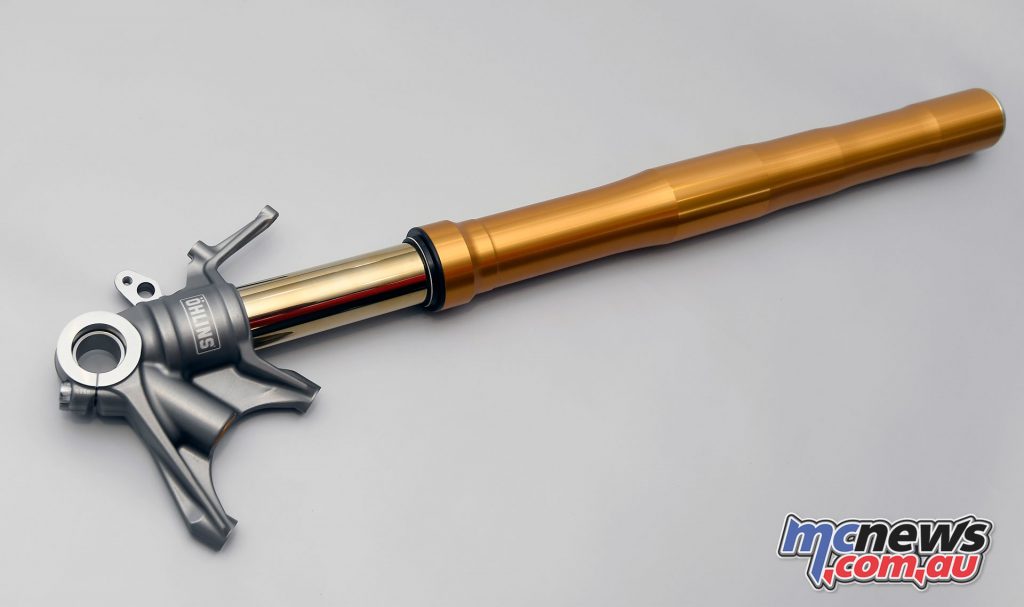
Compared to the NIX 30 model on the Panigale V4 S, the new NPX 25/30 uses a pressurised damping system that is an offshoot of the one used on Öhlins WSB racing forks. Compared to a traditional system, a pressurised one minimises the risk of oil cavitation, offering improved bump absorption while ensuring excellent braking stability and support to give the rider better front-end feel.
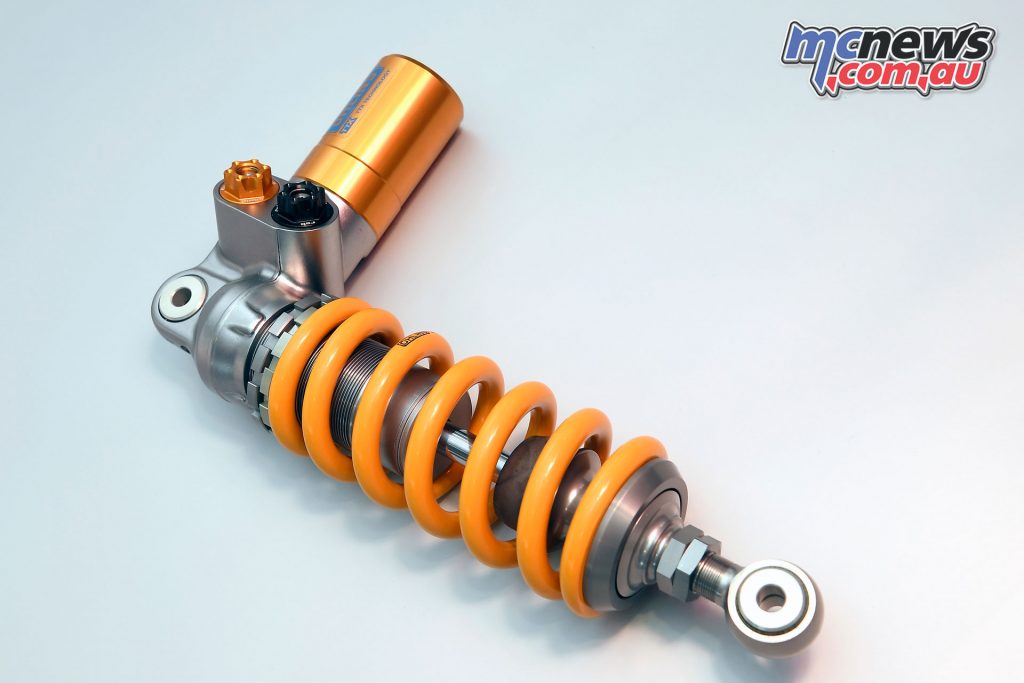
Just like the Öhlins forks used in MotoGP, compression damping occurs in the left fork tube and makes use of a 25mm piston. Rebound damping instead, in the right fork tube, uses a 30mm one. Specifically designed and machined outer tubes save a further 600g with respect to the forks on the Panigale V4 S.

To complete the suspension set-up the bike features the same ‘total black’ aluminium Marchesini wheels used on official Ducati bikes.
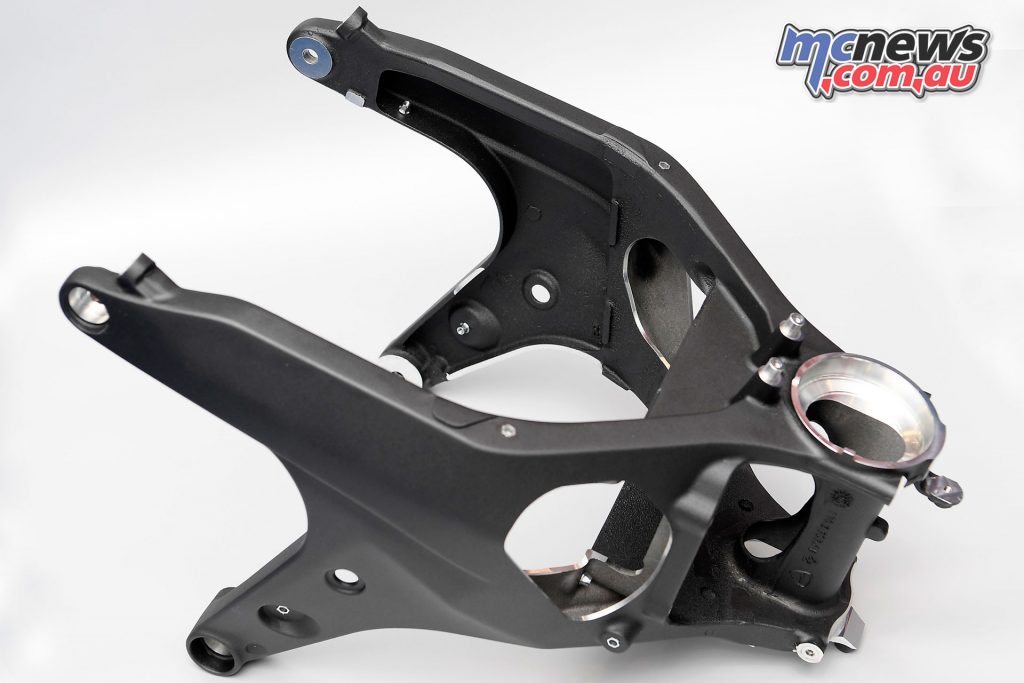
The Panigale V4 R front frame also differs from the V4 S one, with machined sides to attain the stiffness goals set by Ducati Corse and reduce weight even further. To complete the modifications to the chassis set-up, the rear swingarm pivot height can now be adjusted (it has four positions, 2mm apart from each other). This feature broadens the adjustment scope so the bike can be adapted more precisely to individual riding styles and road/track conditions.
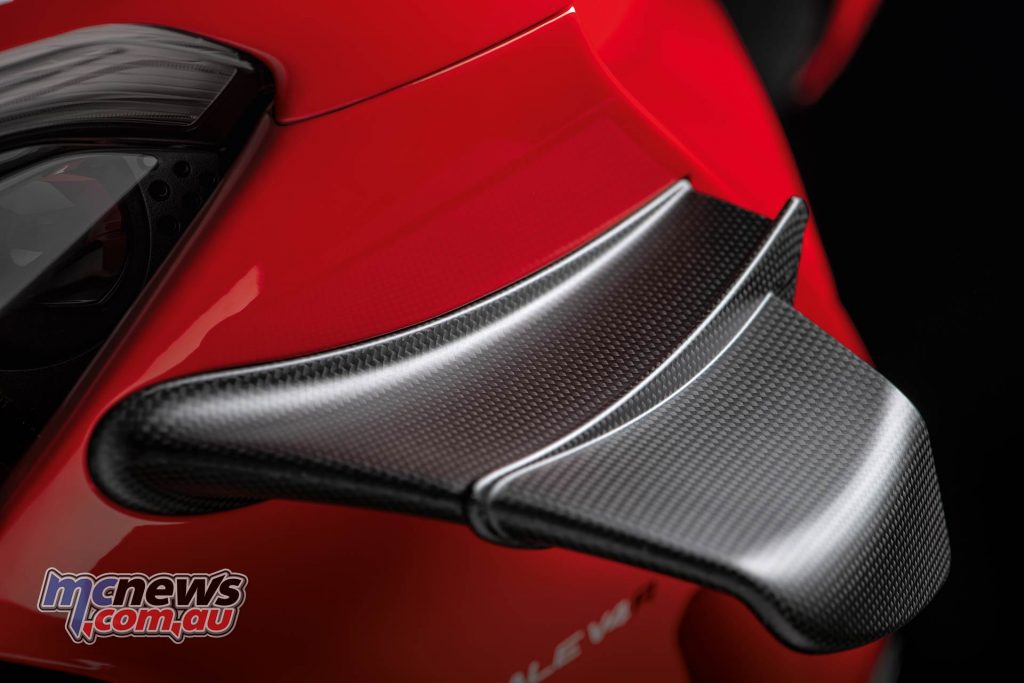
Alongside the race specific engine, and modified suspension set-up the 2019 V4 R also boasts a new fairing designed by Ducati Corse in collaboration with the Ducati Style Centre, further improving aerodynamic efficiency.
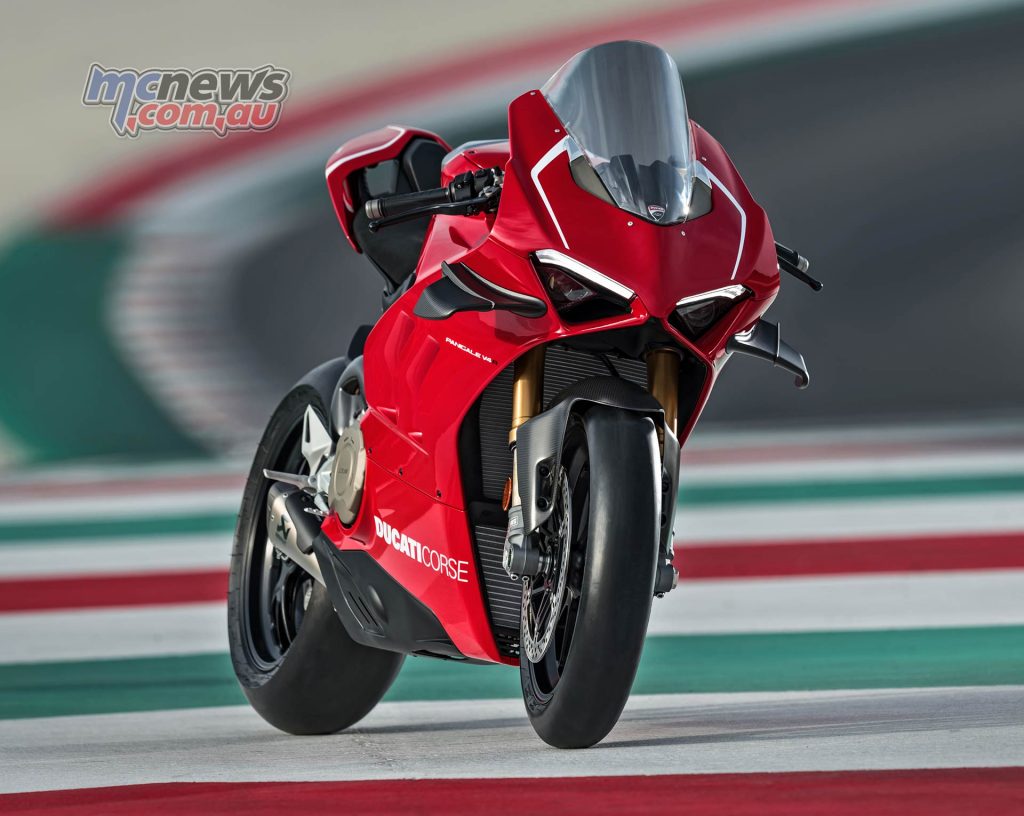
Particularly notable is the inclusion of the aerofoil appendages that stem from the MotoGP prototypes, with carbon-fibre construction for increased stability, with Ducati claiming they further help reduce the reliance on electronic controls, while also aiding rider confidence. Working in concert with the fairing design, the wings increase overall downforce (+30kg at 270km/h).
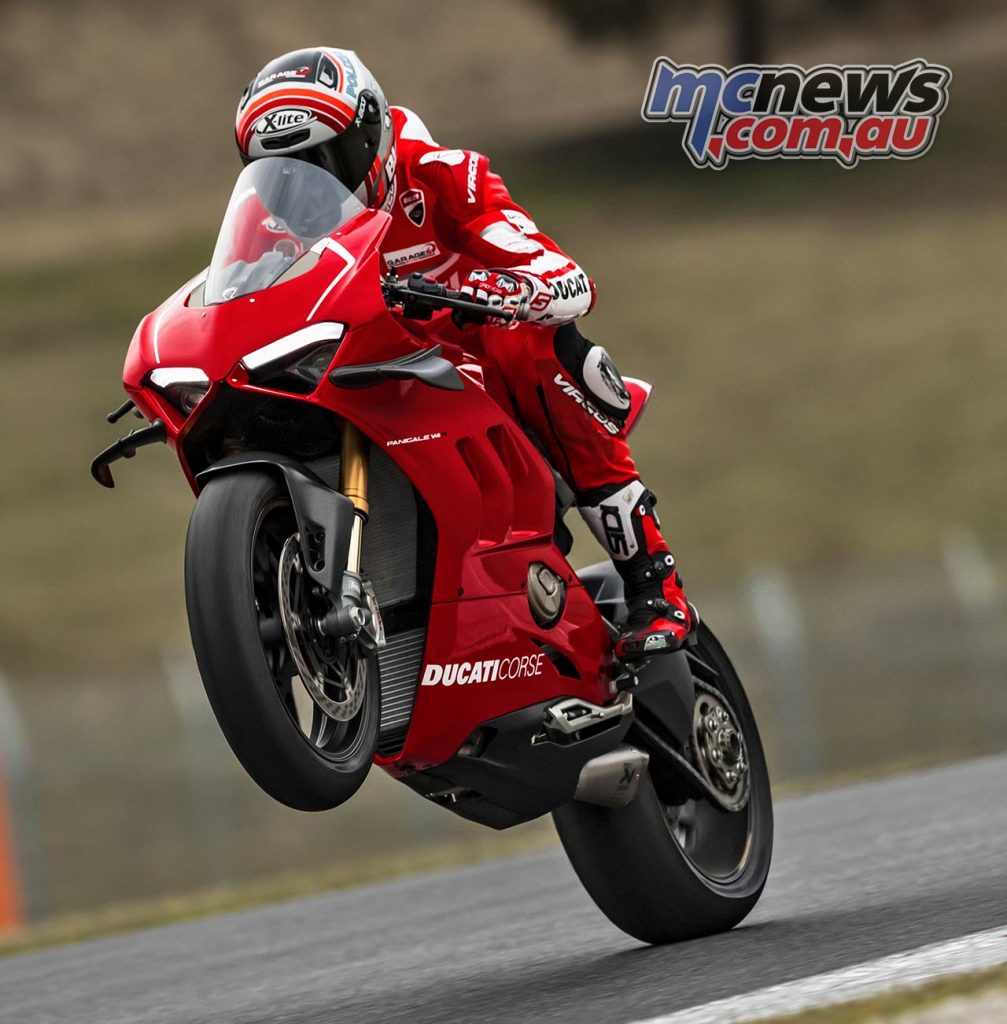
Compared to the Panigale V4, the new screen – higher and more angled – provides better airflow protection for riders, especially in the helmet and upper shoulder areas. The screen is attached to a new nose fairing that is higher and wider (+15mm per side) in the arm-shield zone in order to reduce arm and shoulder-induced drag on the straights.
The lateral fairings have been widened considerably (+38mm per side) with the dual aim of reducing on-rider airflow impact and maximising aerofoil efficiency. At the sides, air vents of the Panigale V4 have been replaced by more efficient ones designed to handle the racing-type temperatures reached by the more powerful engine on the Ducati Panigale V4 R. These new vents increase air through-speeds on water and oil radiators by 6% and 16% respectively.
The Panigale V4 R electronic control package includes
- Bosch Cornering ABS EVO
- Ducati Traction Control (DTC) EVO
- Ducati Slide Control (DSC)
- Ducati Wheelie Control (DWC) EVO
- Ducati Power Launch (DPL)
- Ducati Quick Shift up/down (DQS) EVO
- Engine Brake Control EVO (EBC) EVO
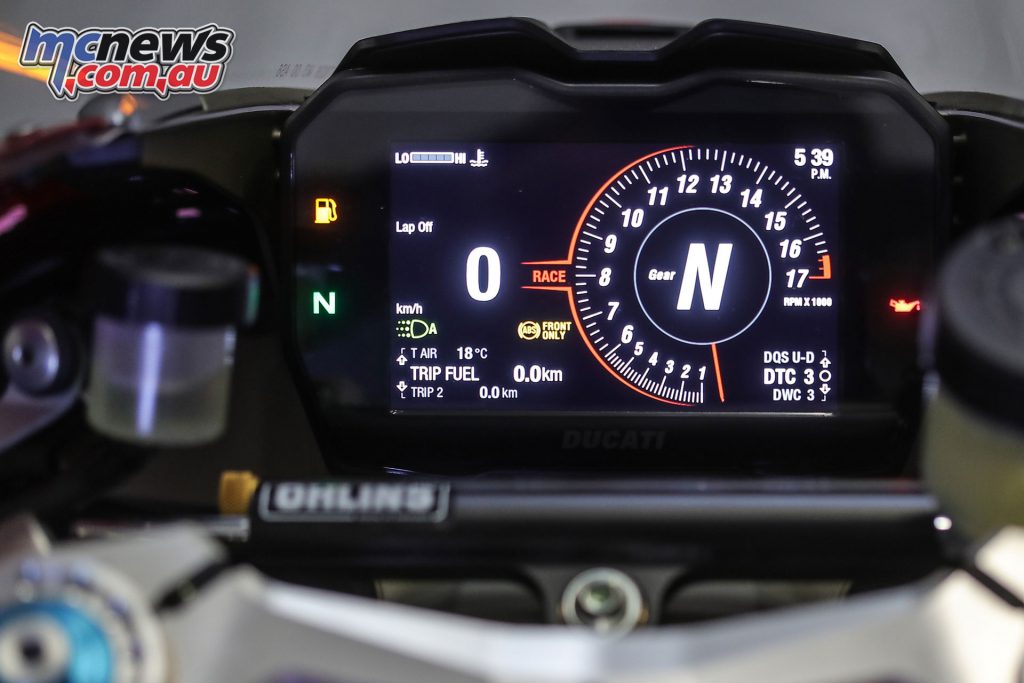
The Panigale V4 R uses the same cutting-edge, high resolution 5″ full-TFT colour display (186.59 PPI – 800xRGBx480) as the Panigale V4. Graphics have been revised to reflect the introduction of new functions and the higher engine rev ‘red zone’.
The dashboard is dominated by the round virtual rev counter on the right. Desmosedici Stradale R revs are displayed within a 1,000-16,500 rpm interval by a needle gauge. Movement of the latter is accompanied by a white trail that acts as a ‘shift light’, changing colour from white to orange and then red as the rev limit approaches.
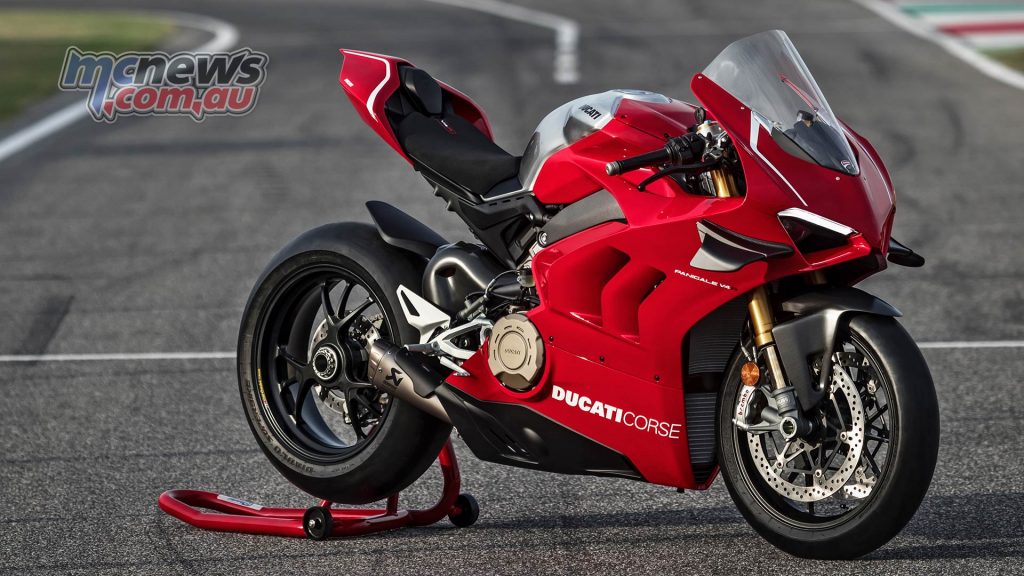
The rider can call up two different lay-outs: ‘Track’ highlights the lap times and the rev counter scale makes the revs used on the track more clearly visible; ‘Road’, instead, replaces lap times with info on the Ducati Multimedia System (DMS), where present, and the rev scale is more appropriate for road use.
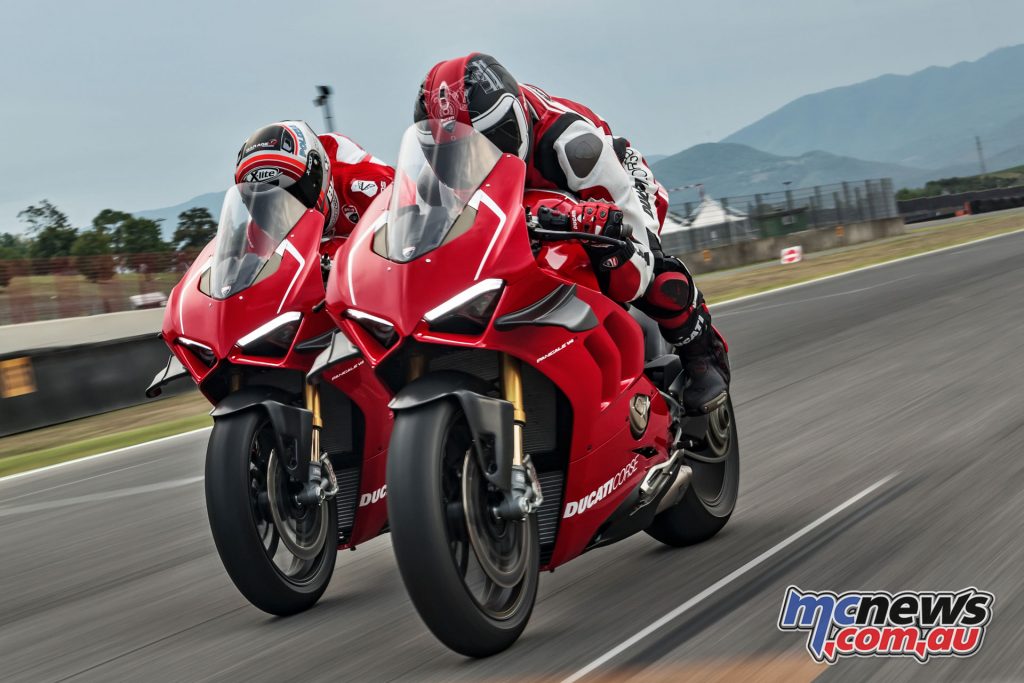
Claudio Domenicali introduced Ducati’s most powerful factory motorcycle, with the brand boasting this new machine as a road-legal WSBK category competition bike, which will constitute the technical foundation for the official Ducati Superbikes that will compete in the World Championship from the 2019 season.
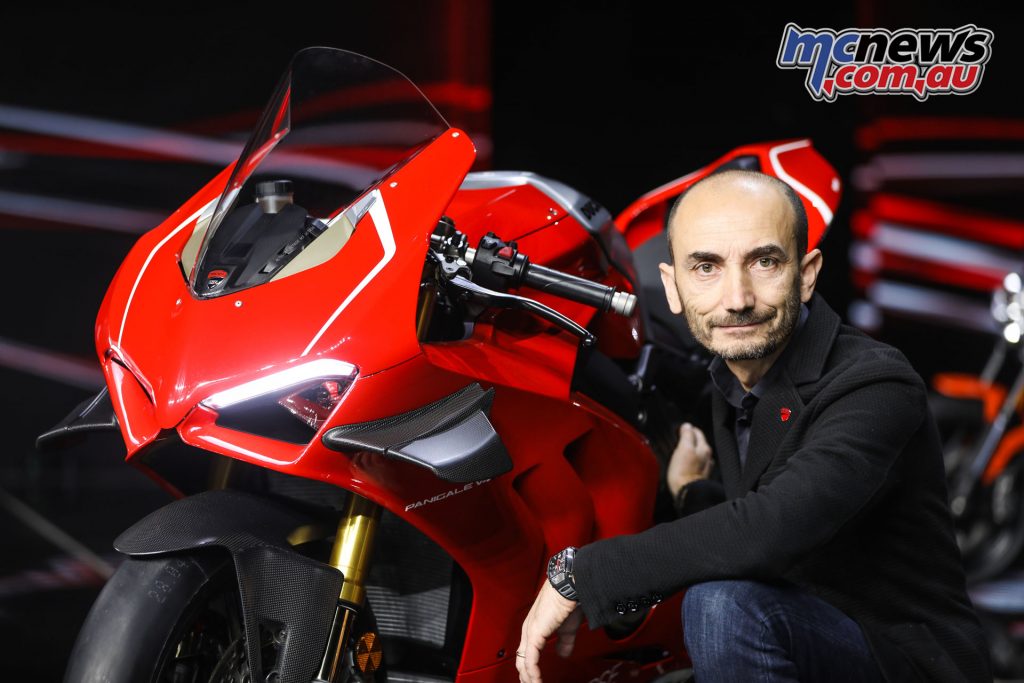
Claudio Domenicali – CEO of Ducati Motor Holding
“Ducati has achieved a striking degree of maturity. It is a global flag bearer of some of the best aspects of Made in Italy excellence. Based on core values of Style, Sophistication and Performance, our company now offers a range as broad as it is state-of-the-art. This year sees the first major overhaul of the entire Scrambler range since its inception, plus a complete renewal of the Diavel and Hypermotard, two bikes that are firm favourites with Ducatisti. Today, safety and rider-friendliness have hit new heights, yet the brand’s sporting soul is as evident as it has ever been. The Panigale V4 R, in fact, is the most powerful factory motorcycle ever built by Ducati. We’re also delighted with our online presence, an area that has enjoyed excellent growth, thus confirming the extraordinary appeal of the entire Ducati product range.”
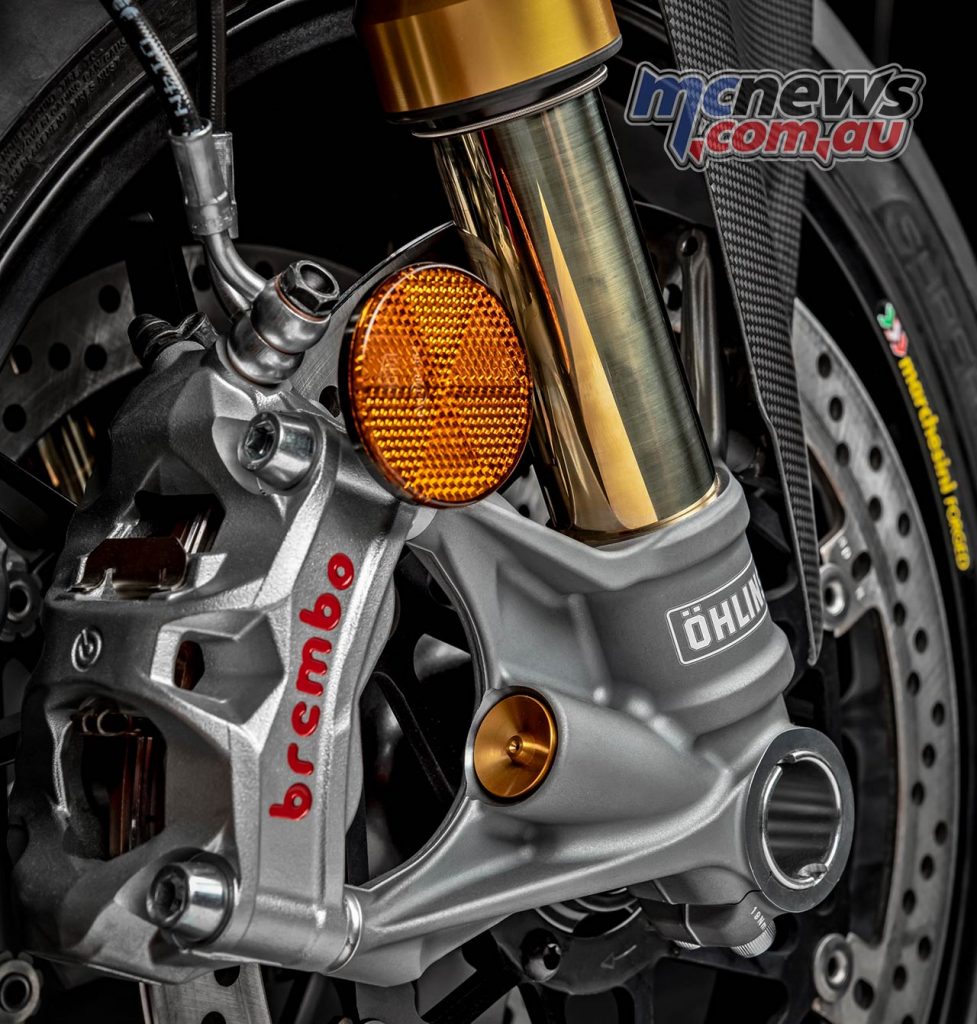
2019 Ducati Panigale V4 R Specifications
2019 Ducati Panigale V4 R compared to V4 Speciale
